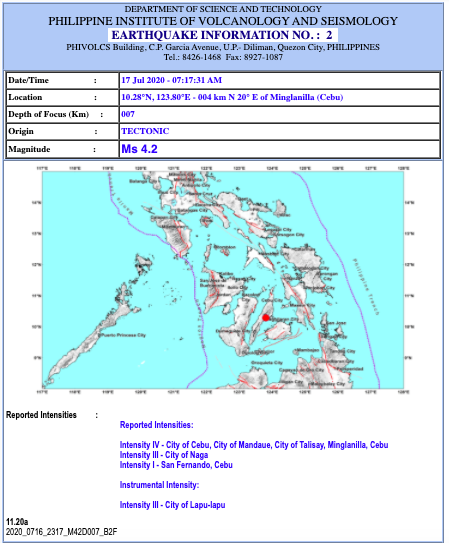
he Philippine Institute of Volcanology and Seismology (Phivolcs), in an updated earthquake bulletin, upgraded the strength of the early morning quake that shook Metro Cebu early Friday morning, July 17 to a 4.2-magnitude from an earlier 3.5-magnitude | via Phivolcs
CEBU CITY, Philippines — The Philippine Institute of Volcanology and Seismology (Phivolcs) has upgraded the strength of the quake that shook parts of Metro Cebu early Friday morning, July 17.
In an updated earthquake bulletin, Phivolcs reported a 4.2-magnitude tectonic earthquake whose epicenter was found in Minglanilla town in southern Cebu.
Phivolcs, in an earlier announcement, measured the quake’s strength at 3.5-magnitude.
However, both the first and updated versions of the bulletin said no aftershocks and damages are expected from the earthquake that occurred at 7:17 a.m.
The state’s earthquake and volcano monitoring bureau also recorded additional places where tremors of Friday’s quake were felt.
Intensity IV was reported in Minglanilla town, and the neighboring cities of Talisay, Cebu, and Mandaue. Naga City that borders Minglanilla in the south had Intensity III while it was Intensity I in San Fernando town.
The shaking of the ground was also reported in Lapu-Lapu City which was tagged as Instrumental Intensity III.
Note: This is an updated version of an earlier published story. Click here for the story on Phivolcs’ first update of the July 17, 2020 earthquake.
/dbs